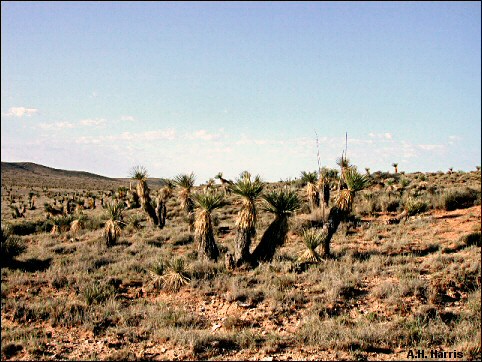

There are all sorts of reasons why plants grow tall. Almost certainly the most common is to meet competition for light. Plants differ in their light requirements, but failure to meet those requirements results in starvation and death. In forests, trees requiring the most light must avoid being over-topped by others—the race is on!
Rather obviously, that's not really the problem in our Chihuahuan
Desert lowlands, though. There's light aplenty in almost all of our habitats. The
rationale for height of shrubs would seem to be to allow the leaf-bearing areas to
spread out from the central stems and to present several layers of leaves to sunlight.
Perhaps the same principle governs such tall-growing, columnar plants as arborescent
yuccas that have leaves restricted to the uppermost parts, but one has to wonder a bit.
We know some plants were adapted to now-extinct herbivores. Could it be that a yucca
that managed to survive to some height would then have its leaves above the reach of
browsers? Probably something we'll never know, but it's kinda fun to
speculate!

Listen to the Audio (mp3 format) as
recorded by KTEP, Public Radio for the Southwest. ![]()
Contributor: Arthur H. Harris, Laboratory for Environmental Biology, Centennial Museum, University of Texas at El Paso.
Desert Diary is a joint production of the Centennial Museum and KTEP National Public Radio at the University of Texas at El Paso.

Yuccas (Yucca elata), Diablo Plateau, Texas. Photograph by A.H. Harris.